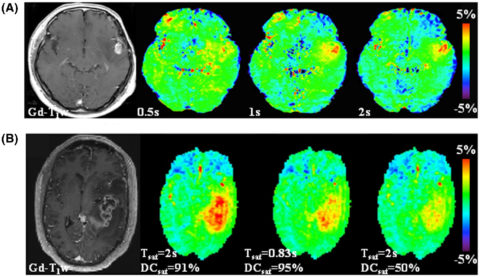New paper: Consensus on clinical APTw CEST MR imaging
MRM : https://doi.org/10.1002/mrm.29241
CEST MRI provides many different clinically promising contrasts. The best studied is Amide Proton Transfer-weighted (APTw) CEST MRI in brain tumors. However, even for APTw in brain tumors many protocols are out there, often with different rf saturation powers, rf duty-cycles and durations, or with different post processings and visualizations. In this article CEST researchers of various groups tried to nail down a single (well almost) protocol that defines APTw for brain tumor imaging.
The recommendation for brain tumor APTw is B1rms = 2 µT, Tprep = 2s, and DC>90 % With at least 6 frequency offsets around +-3.5 ppm for subsequent MTRasym analysis.
There might be improved stratgegies out there, however
(i) it does not help if every group measures something different,
(ii) we need to compare new approaches to the same standard, and
(iii) this protocol has the most clinical validations.
Thus, this protocol should be used as a reference for all future protocols.
Further highlights of this paper are:
- The recommend APTw protocols are defined in the pulseq-CEST format for exact reproduction(pulseq-cest.github.io) This is important as even experts make errors with B1rms and DC definition.
- The recommended APTw protocols were realized and scanned on MRI scanners of three different vendors, and the outcome compared.
- The recommended APTw protocols are discussed in detail, including mixing of different effects, leading to the observed flat contrast in healthy brain.
- And the many contributing factors that affect the amide pool, but also concomitant effect changes occuring in brain tumors such as T1 and MT alterations.
- Clinical examples of APTw performance for tumor characterization are shown including more advanced fluid-supressed evaluation metrics.
- Statements on issues where no consensus could be found were left out in the paper. This includes
- (i) The exact brain tumor contrast origin with relative sizes of contributions e.g. amide pool changes vs. MTC pool changes vs. spillover influences.
- (ii) simulations, as no final pool model could be agreed on.
- (iii) last degrees of freedom in offset acquisition and related evaluation (B0 acquisition and correction, smoothing, AUC, etc.)
